Public transportation systems could remedy many of the problems faced by major cities in developing countries. But is there a one-size-fits-all solution to implementing them?
The main concern when Rabat’s tram system opened in 2011 was the price of a ride. Would tickets costing 6 dirham (about €0.50) put people off using it?
Today, the metro’s major problem is too many users. The tram connects the Moroccan capital Rabat with nearby Salé, and 29 km of extensions are being built to bring other populations within its range of coverage.
“It is a victim of its own success,” said Maël Martinie, Project Manager at MobiliseYourCity (MYC), a partnership that supports the planning of sustainable urban mobility in developing countries. “It is a good example of a mass transit system that was built thanks to intelligent planning and efficient design from the city and close collaboration with transport operators.”
Numerous cities in developing countries could follow in Rabat’s tracks. Most are jammed with cars, which pollute the air, add to global warming and cause accidents. They also waste the time of people stuck in traffic who could be generating economic growth.
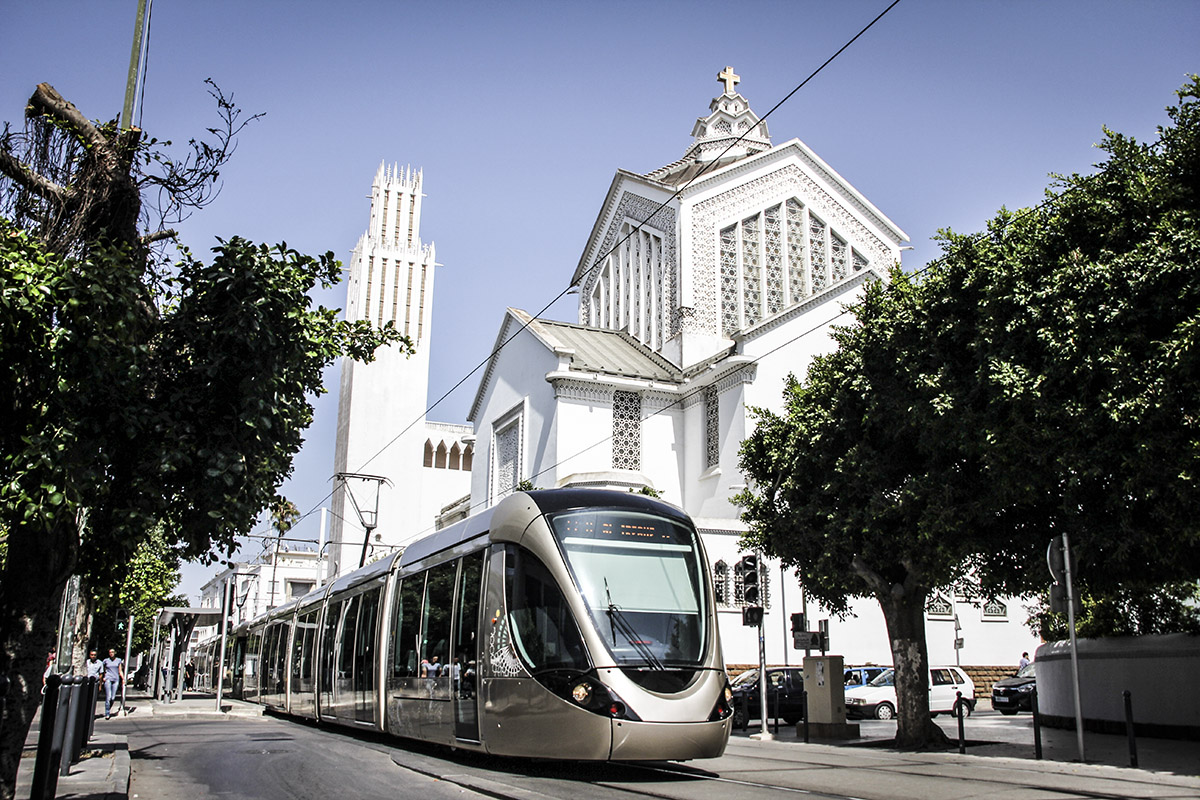
Rabat-Salé tram line in Morocco © Michał Beim/Wikimedia Commons
But the variety of different urban interests makes it hard to design better transport systems. Groups including informal taxis, car owners and street vendors all have an interest in preventing change that dedicates more space to public transport. Many cities lack planning expertise, and finance is almost always a problem.
There’s no silver bullet. However, a combination of good examples, creative financing, and imaginative leadership point to possible solutions. “The first condition is leadership,” said Aisa Kirabo Kacyira, Deputy Executive Director and Assistant Secretary General, UN-Habitat. “By leadership I mean a clarity of vision and that vision being shared by leaders, citizens, government, the private sector, civil society – and all the other stakeholders that are a key to achieving the vision.”
Douala, the largest city in Cameroon, has a population of more than 3 million, which is growing by more than 3% a year (100,000 new dwellers in 2015 alone). It is concentrated on a single centre that many people want to reach for work, congesting the streets with cars. Much of the city’s economy is informal and takes place on any available public space, especially where there are lots of passers-by.
“So there’s no more space on the pavements, and there’s no more room on the roads, and we end up with a problem of congestion,” said Prisca Mbimi Tene, Head of Service “Mobility and Urban Transport Management” in Douala City Council. A major part of the solution, she hopes will be dedicated bus routes, which will bring large numbers of people in and out of the city.
The following video explores challenges related to public transport in developing countries
Building Consensus
Like much other urban planning, building a bus rapid transit (BRT) system starts with understanding how people use a city and making compromises between different groups, said Christophe Chevallier, Chief of Urban Design, AREP Ville, a multidisciplinary consultancy owned by French rail network SNCF.
Planners need to think about how people will move from the train station to the BRT station – and where they will go from the BRT station they arrive at. Construction of a system on an avenue with a dedicated lane takes up space that cars could use, creating competing interest groups. But more than such battles, planning is most often held up by a lack of constructive communication.
“Usually they don’t really disagree with each other,” said Chevallier. “It’s just that they don’t talk with each other. The challenge is to get people to accept that we have to organise places for everyone to talk.”
To guide and back up consensus-based decisions, cities need technical expertise. Development takes place over a long period of time, which requires a strategy that does not change after every election. So cities need institutes with a deep understanding of the challenges that provide technical input and a continuity of vision.
“One thing that is truly important is to provide more intelligence in the system,” said Eric Huybrechts, Architect and Urban Planner in the Paris Region’s Planning and Development Agency. “Cities need to have urban planning agencies or institutes to develop strategies and policies at the metropolitan scale. You need laws and technical competencies – not only politicians. You need to have strong technical capacity to support the decision makers in making good decisions, and this is very difficult.”
The following video discusses sustainable governance and urban planning
Money Needed
Even if city administrations can get behind a project, they often have trouble mobilising public money, whether through taxation or by borrowing.
“These are big infrastructure projects that are needed to be built, and it requires a lot of money,” said Richard Calland, Co-director of the African Climate Finance Hub. “Many African cities simply don’t have the fiscal credibility to either go to the market or to receive big grants from multilateral donor funds.”
Sometimes politics can get in the way. Dakar was on the verge of announcing a $40 million green bond in 2016, the first municipal bond issue by a sub-Saharan city outside South Africa. But two days before its scheduled launch, Senegal’s central government blocked the issue, citing technical reasons despite not having objected in the years the bond was in preparation.
The real reason, said Calland, was “probably because they didn’t like the fact that the mayor, from a different party to the national government, was actually making such bold steps and building such a strong city.”
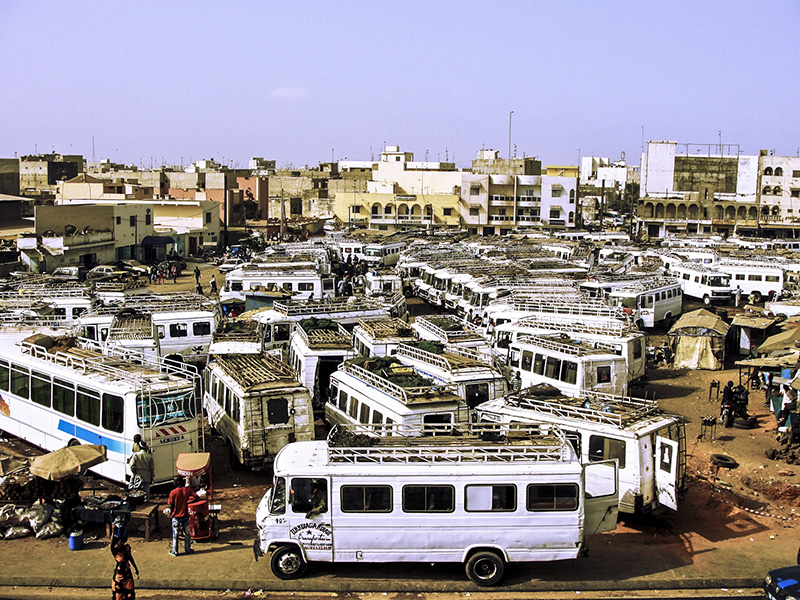
Buses in Dakar, Senegal © Jeff Attaway/Flickr
So international development funds need to be innovative. So far, Calland said, “only 11 percent of multilateral climate finance funding has gone to cities. Of that, only 5 percent has been directed towards resilience and adaptation. That needs to change fast, because otherwise cities are going to be underfinanced at precisely the moment where they need to invest a lot in resilient, low-carbon infrastructure.”
When looking for a model city to follow, Singapore is often cited as a paragon of successful urban planning. It is densely populated by people of different ethnicities and levels of wealth; the rule of law is respected; and it is safe.
“Should everybody take the same route?” asked Kacyira of UN-Habitat. “No, because a city is about the character and identity of people. You want to be in a city that you feel is yours and that you belong to. But even with differences in character, there are principles that need to be upheld across the board.”
Some cities are evolving well only in some respects, she said. “Despite the huge traffic congestion, I love the greenery of Nairobi. It has been preserved because quite a good part of it is actually natural. But the planning is just reacting, because the population growth and the urbanisation process are much faster than the capacity of the city leadership to organise that.”
Image credit: UN Photo/Christopher Herwig via Creative Commons license 2.0

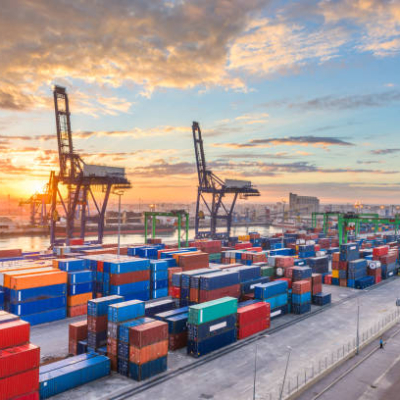
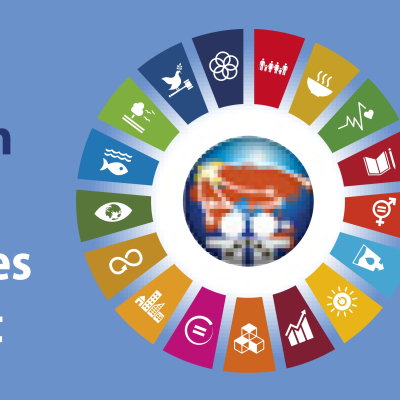
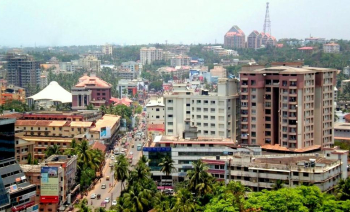
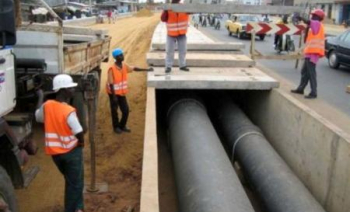

Log in with your EU Login account to post or comment on the platform.